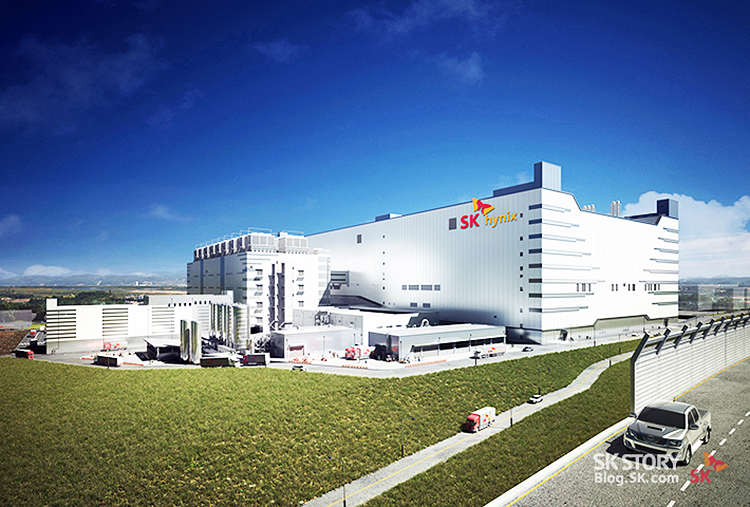
SK Hynix is reportedly delaying the completion of its second 3D NAND facility in Dalian, China. This decision comes in response to shrinking memory market demand and U.S. restrictions on exports of advanced fab tools to China, reports DigiTimes, citing South Korean media. Furthermore, due to troubles with importing wafer fab equipment to China, SK Hynix may even sell the fab shell upon completion before moving in the wafer fab tools.
SK Hynix got its Dalian site with a memory fab by taking over Intel's 3D NAND production and SSD business in 2021. In May, 2022, the company started to construct an additional fab at the site, after Intel did all the heavy lifting with infrastructure, planning, and permissions from local authorities. Typically, it takes about a year to build a fab shell. However, construction has not approached the finishing stage, and discussions regarding delivery and installation with wafer fab equipment suppliers have yet to occur, according to sources with knowledge of the matter cited by the media outlet. In the worst case scenario, SK Hynix might decide to sell off the building instead of installing expensive tools.
There are several factors that affect SK Hynix's decisions about equipping the fab.
First, wafer fab equipment (WFE) manufacturers from the U.S. have to obtain a special export license from the U.S. Department of Commerce to export tools that can be used to make 3D NAND with 128 or more layers to China. To make the fab competitive in the long term, SK Hynix must target 3D NAND production nodes with 200 or even 300 layers.
Formally, both Samsung and SK Hynix have obtained a waiver from the U.S. government to export the production equipment they need to China from October, 2022 to October, 2023. However, it's uncertain whether this period will be extended for another year or not.
Getting all the tools into China before October 2023 is impossible due to long lead times, and it is unlikely that it will be possible to get the necessary WFE before October 2024 too, the media report asserts. Furthermore, American engineers from companies like Applied Materials, KLA, and Lam Research are now barred from providing services to semiconductor facilities in China without an export license from the government, so even installing procured tools might be a problem.
Second, even if SK Hynix manages to bring in all the tools it needs to China in time and install it, it will have to run the fab, which means exporting additional components from the U.S., Europe, and Japan, and potentially hiring U.S. engineers to maintain the WFE.
Finally, due to the soft demand for 3D NAND and DRAM, SK Hynix reduced its 2023 capital expenditure budget by approximately 50% compared to 2022, necessitating a flexible adjustment to the Dalian plant's construction timeline. As a consequence, the company may simply not have enough money to invest in the Chinese fab as it is building up another massive fab in South Korea.
Consequently, some industry insiders speculate that SK Hynix may sell the new Dalian fab directly to a Chinese company without installing equipment after construction is completed.







